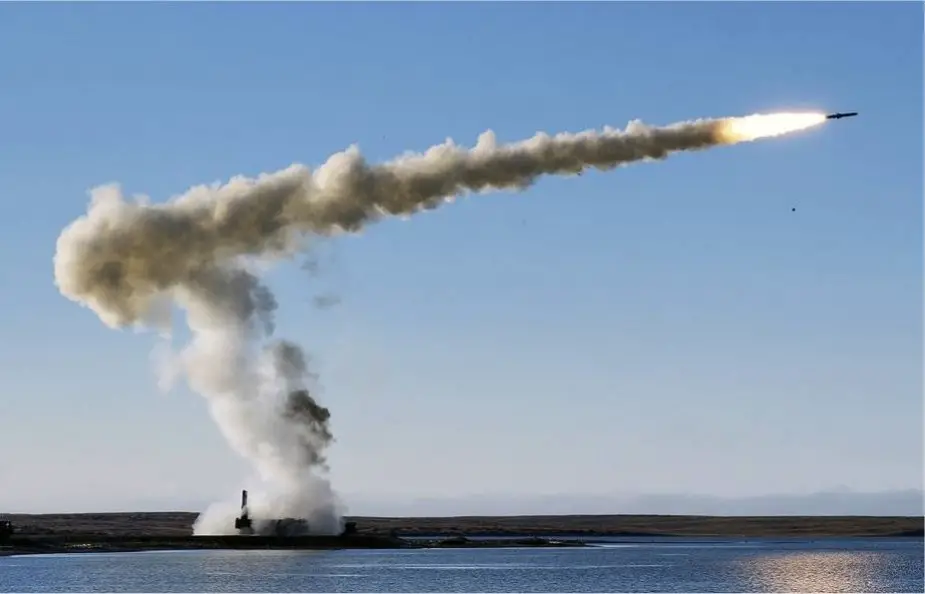Breaking news
Russia's Leningrad Naval base to be reinforced with Bastion coastal missile systems.
According to information published by Tass on August 8, 2022, the Leningrad naval base of the Russian Navy will be reinforced with Bastion coastal missile systems that will be able to keep at gunpoint the entire Gulf of Finland, part of the Baltic Sea, Estonia and the coast of Finland in the wake of Finland’s decision to join NATO.
Follow Navy Recognition on Google News at this link
 Bastion coastal missile system (Picture source: Tass)
Bastion coastal missile system (Picture source: Tass)
However, Russia’s Defense Ministry did not specify when the missile systems would go on combat duty. Bastion systems are equipped with Onyx (SS-N-26 Strobile) supersonic precision-guided missiles, which will soon be upgraded, the Izvestiya newspaper writes.
Coastal defender
The Bastion system’s missiles can hit targets at a distance of 600 km (373 mi). Thus, they will be able to reach Finland. “The coastal missile systems will be able to keep at gunpoint the coast of this country [Finland], the entire Gulf of Finland, part of the Baltic Sea, and Estonia,” the article reads. Therefore, it will be possible to keep under control the Baltic region and part of Scandinavia, which is extremely relevant in the wake of Finland’s decision to join NATO.
However, tensions in the Baltic region continued growing. NATO rotational air groups were constantly sent to Lithuania, Latvia and Estonia for patrolling along the Russian borders, the Izvestiya says.
At a briefing for military attaches in December 2021, Deputy Defense Minister Alexander Fomin said that during the year, NATO member states made more than 1,200 aircraft sorties and over 50 warship sorties for maritime reconnaissance in the Baltic maritime zone, thus violating the provisions of the Rome Declaration signed in 2002, which laid the foundation for the work of the Russia-NATO Council. In response, Russia has to actively strengthen the coastal forces of the fleet and coastal missile and artillery troops and rearm them with the latest systems.
After the advanced coastal missile systems assume combat duty in the Leningrad Region, the flight range of the latest missiles to potential targets will increase significantly. These missiles could be directed both from the air and from ships or submarines.
Due to a special radar homing head, Onyx missiles are highly accurate and can destroy not only ships, but also land targets. The Leningrad naval base has previously received Bal (SSC-6 Sennight) complexes equipped with Kh-35 (AS-20 Kayak) low-signature high-precision cruise missiles.
In addition to ground targets, the Bastion can eliminate both single ships and amphibious assault formations, convoys, aircraft carrier strike groups operating near the coasts covered by the system.
Bastion systems have been successfully used more than once during exercises of the Russian Armed Forces. In June, the complexes successfully defended the coast of the Primorye Territory from an attack delivered by a simulated enemy from the sea.
During the maneuvers, the crews moved to fight positions, quickly deployed the launchers of the complex, and performed a simulated missile launch against the enemy naval formation.
The strike notionally destroyed all the targets. In 2020, Bastion systems showed high efficiency during drills in the Arctic, where they practiced destroying an adversary group of warships and protecting navigation in the Northern Sea Route.
Onyx cruise missile
The Bastion system is armed with the Onyx cruise missile, which also makes part of the P-800 anti-ship complex. Its development began in 1982 and it was made operational in 2002. Surface ships and submarines are armed with the complex. For example, the Project 885 multipurpose lead submarine Severodvinsk is a carrier of these missiles.
The export version of the missile (known as Yakhont) has a maximum firing range of 300 km (186 mi) and a maximum speed of 2.5 Mach at a high altitude. Its conventional warhead weighs 250 kg.
The Russian-Indian BrahMos missile has been developed on the basis of the Onyx. On August 1, the CEO of the Russia-India Joint Venture BrahMos Aerospace Atul Rane told TASS that the flight trials of the BrahMos missile with an extended flight range would begin soon.
The original version of the Onyx missile is planned to be upgraded as well. It was reported in 2019 that Russia’s NPO Mashinostroeniya had developed the Onyx-M sea-launched cruise missile with a maximum firing range of 800 km (497 mi) and increased accuracy against sea and land targets. At the same time, the Onyx-M variant features increased jam resistance and can carry a nuclear warhead.
The original version of the missile is being actively used during the special military operation in Ukraine. It was reported in June that Onyx missiles had hit hangars with Ukrainian Bayraktar TB2 drones at the Shkolny airfield near Odessa.
© Copyright 2021 TASS Navy Recognition. All rights reserved. This material may not be published, broadcast, rewritten or redistributed.




























